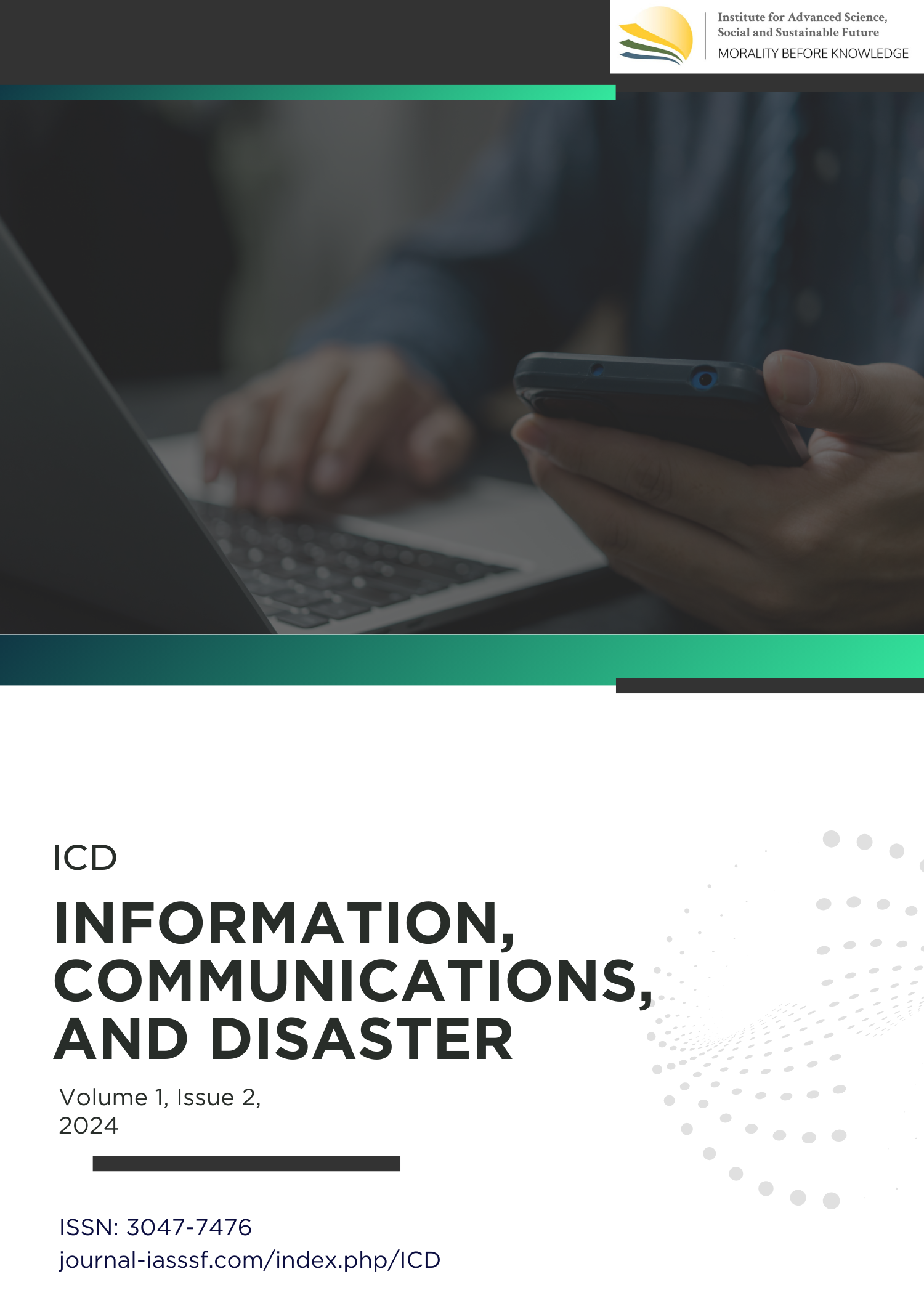A case study: Mapping disaster vulnerability of oil palm plantation areas
DOI:
https://doi.org/10.61511/icd.v1i2.2024.1888Keywords:
disaster vulnerability map, oil palm plantation, fire risk, forest fire, spatial analysisAbstract
Background: The expansion of oil palm plantations through improper land clearing often leads to forest and swamp fires, exacerbating disaster risks. This study aims to develop a Disaster Vulnerability Map (DVM) for areas under Oil Palm Plantation Rights (HGU) by integrating disaster risk reduction measures, including monitoring location permits and Regional Spatial Planning (RTRW). Methods: The research employs the Composite Mapping Analysis (CMA) method to score and weigh the disaster vulnerability factors, focusing on the distribution of hotspots in Riau Province. This quantitative analysis uses a ratio-based approach to assess the vulnerability of each HGU location. Findings: The results indicate that 45 HGU locations in Riau Province are situated in high fire risk zones, covering an area of 95,260.7 ha (10.4%). Among these, 70.4% of the total area (647,160.3 ha) is located in forest and land fire-prone regions, while 19.2% is categorized as less threatened. Conclusion: The findings highlight the critical need for comprehensive disaster vulnerability mapping to mitigate fire risks in oil palm plantation areas. Novelty/Originality: This study contributes an innovative approach to disaster risk reduction by combining spatial analysis with location permit monitoring, focusing on oil palm plantations, which has not been extensively studied in the context of forest fires.
References
AID Environment. (2003). Fact-sheet: Palm oil production in Southeast Asia. AID Environment.
Badri, M., Lubis, D. P., Susanto, D., & Suharjito, D. (2018). Communication risk of stakeholders in preventing forest and land fires in Riau Province. Jurnal Ilmiah Peuradeun, 6(2), 179–198. https://doi.org/10.26811/peuradeun.v6i2.241
Christin, Z. L., Bagstad, K. J., & Verdone, M. A. (2016). A decision framework for identifying models to estimate forest ecosystem services gains from restoration. Forest Ecosystem, 3(1), 1–12. https://doi.org/10.1186/s40663-016-0066-0
CIFOR. (2016). IPN Toolbox: Tema C. CIFOR.
Harnanda, I. T. (2022). Peran Badan Penanggulangan Bencana Daerah dalam pengendalian kebakaran hutan di Provinsi Riau (Studi Kabupaten Rokan Hilir). Universitas Islam Riau.
Ikhsan, H. M., & Setiawan, E. S. T. (2021). Upaya mitigasi kebencanaan di Kabupaten Sragen, Indonesia dengan menggunakan pendekatan quantitative risk assessment dan house of risk fase 2. Universitas Muhammadiyah Surakarta.
Sudiana, N. (2019). Analisis potensi bahaya kebakaran lahan gambut di Pulau Bengkalis, Kabupaten Bengkalis Provinsi Riau. Jurnal ALAMI: Jurnal Teknologi Reduksi Risiko Bencana, 3(2), 132–140. https://doi.org/10.51872/alami.v3i2.48
Syaufina, L., & Hafni, D. A. F. (2018). Variabilitas iklim dan kejadian kebakaran hutan dan lahan gambut di Kabupaten Bengkalis, Provinsi Riau. Jurnal Silvikultur Tropika, 9(1), 60–68. https://doi.org/10.29244/j-siltrop.9.1.60-68
Wibowo, A. W. A. (2020). Fungsi Dinas Lingkungan Hidup dan Kehutanan Provinsi Riau dalam pencegahan kebakaran hutan dan penyelesaian kabut asap di Kota Pekanbaru. Abstract of Undergraduate Research, 11(1), 1–10. https://ejurnal.bunghatta.ac.id/index.php/JFH/article/view/16334
Downloads
Published
Issue
Section
Citation Check
License
Copyright (c) 2025 Elsadday Panjaitan

This work is licensed under a Creative Commons Attribution 4.0 International License.














